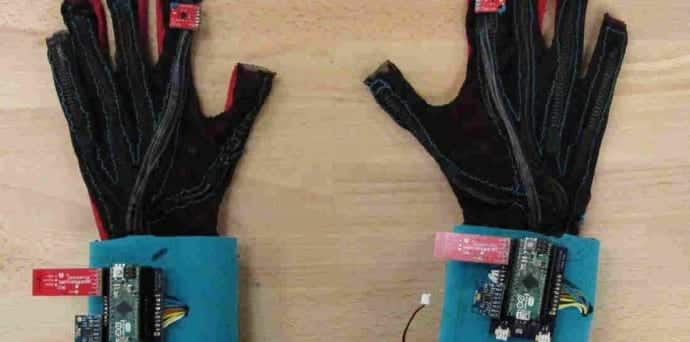These gloves translate sign language into text and words
A pair of 19-year-old University of Washington undergraduates have created gloves called SignAloud that converts sign language words and letters into text and speech. SignAloud gloves instantly translates American Sign Language (ASL) to audio, allowing for seamless conversation. The gloves are attached with sensors, which track the way individual fingers bend or flex, and send this data to a computer via Bluetooth, which then turns it into text and spoken word.
The brain behind the invention, Navid Azodi and Thomas Pryor, both college sophomores, say the gloves will help create a communication bridge between deaf and hearing communities.
“We wanted to develop something that would help the deaf and mute better communicate with the rest of the world, without changing how they already interact with each other,” explains Azodi. “By simply putting on a pair of gloves, those who utilize American sign language can now communicate with the rest of the world the same way they communicate with each other.”
However, its creators have faced criticism about failing to interpret the deaf community and its need for understanding. Since the gloves only translate sign language into sound, and not the other way round, there’s the danger that the technology will treat communication between deaf and hearing users as a one-way street.
“A lot of the feedback that we’ve been receiving goes down to this idea that we are not understanding the culture — there’s a whole deaf culture around this — and by no means are we trying to interfere or impose something in that culture or community,” Azodi said.
https://youtu.be/l01sdzJHCCM
However, they said that the project is still in its prototyping phase. The next stages will include concentrating on the intrinsic complexities of ASL’s grammatical structures as well as trying to translate ASL to other languages. They are also working on better understanding ASL, which is more than just hand movements; it also makes use of body language and facial expressions to convey meaning. For instance, in ASL, frowning while signing something or shaking your head indicates a negative of that word.
“That speaks to the complexities and nuances of American Sign Language,” Azodi says. “By no means have we completely tackled that but we are moving in that direction.”
This invention was one of the seven inventions that was recently awarded 2016’s prestigious Lemelson-MIT Prize of $10,000.
“Many of the sign language translation devices already out there are not practical for everyday use. Some use video input, while others have sensors that cover the user’s entire arm or body,” Pryor said in a statement. “Our gloves are lightweight, compact and worn on the hands, but ergonomic enough to use as an everyday accessory, similar to hearing aids or contact lenses.”

